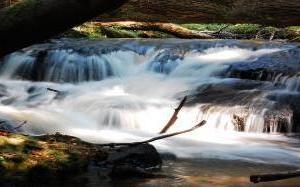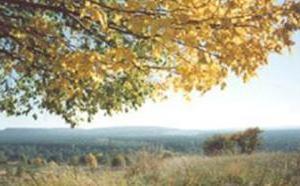|
DZIAŁ: ROZTOCZE |
||
|
|
THE ROZTOCZE NATIONAL PARK |
|
The Roztocze National Park
Declared a national park in 1974, the Roztocze National Park is the oldest protected site of this kind in the Lublin Region. However, conservation traditions date back to the end of the 16th century when Chancellor Jan Zamoyski established a nature reserve called "Zwierzyniec" [a game reserve] as part of his estates extending over the Roztocze forests. Here various species of forest animals could enjoy their freedom including the original tarpan or the wild forest horse. Today the Polish horse -descendant of the tarpan - which has its refuge here, is the symbol of the Roztocze National Park. The park covers an area of 8481.76 ha of which 92 % are forests composed of various species of fir, spruce, pine, beech, hornbeam, and oak trees. The most valuable of them are fir and beech forests characteristic to the lower parts of the Carpathian mountains.
The rich and varied vegetation in the park includes over 750 species of vascular plants characteristic of lowlands, mountains (Tarhaukonhattu, Fir Clubmoss), northern vegetation (e.g. Twinflower), south-eastern plants (e.g. Pontian and Clematis) and plants of the Atlantic basin (sundew and Bog Clubmoss). There are over 100 rare species of which 40 are under special protection (Wild Garlic, and Alpine Leek, Anemone silvestris, Daphne misereum, 3 species of sundews, and a wide range of orchids and Lady's Slipper Orchid). The park's fauna is just as diverse. Almost all species of forest animals are amply represented: deer, roe deer, wild boar, fox, -wolf, lynx, marten, badger, beaver, and occasional elk. The region is also home to numerous insectivorous mammals, rodents and bats, all under special protection.
There is also a rich world of birds: of approximately 200 species, 130 are regular inhabitants of the park. These include Lesser Spotted Eagle, Western Honey Buzzard, Black Stork, Large Grouse, White-backed Woodpecker, and Flycatcher (Muscipapa narcissina and Muscipapa strata).
Reptiles include several species of lizards, slow worms, grass snakes and vipers. Amphibians are represented by species of newts, toads, and brown and green frogs.
The world of insects is even more diverse. Some of the more prominent species include Swallowtail, Lesser Purple Emperor, beetles of the Carabidae family, and numerous species of bugs of the Hemiptera family.
The best way to exploring the park is to start from the Museum and Educational Centre.

